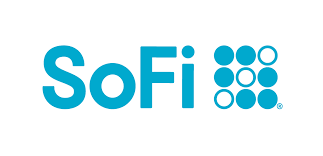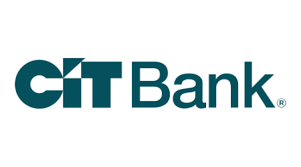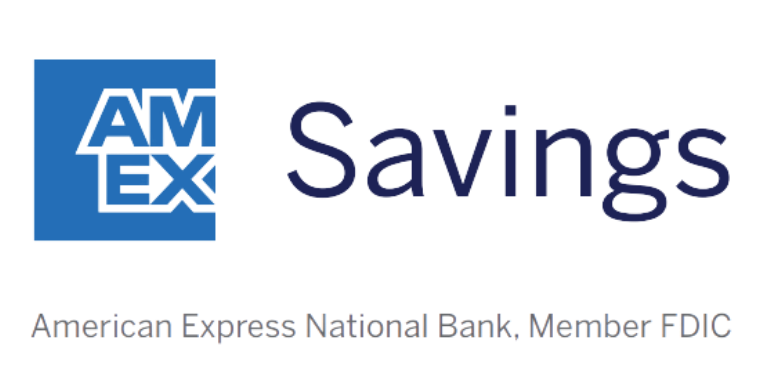You've probably heard the term APY when opening up a savings account, interest-bearing checking account, money market account, or a certificate of deposit (CD). It's common knowledge that a higher APY is better than a lower one, but when asked "What is APY?", most people draw a blank.
It's actually pretty simple. Here's a short primer on APY and how it boosts your bank accounts.
What is annual percentage yield (APY) in banking?
APY stands for annual percentage yield, or how much your balance grows each year. It's the standard way for a financial institution to describe the returns you can earn on your savings, CD, or interest-bearing checking account.
Example: Say you have a $1,000 savings account balance with a 1% APY. In one year, it will grow by $10. This assumes your APY and your balance remain steady, which isn't always the case. But APY gives you a basic understanding of how much you could earn in one year.
APY vs. interest rate
People often use APY and interest rate interchangeably, but they're different. Interest rate is a part of the APY formula, but APY also takes into account how often your savings compounds. The formula for calculating APY is this:
APY = (1 + Interest Rate/Compounding Period)^Compounding Period − 1
Interest rate: The annual interest rate, usually as a decimal.
Compounding period: The number of times the interest is compounded per year.
If you have an account with a 1% interest rate that compounds monthly, the APY would actually be about 1.005%. APYs are usually slightly higher than interest rates, but they're typically close.
When advertising, banks use APY instead of interest rates because APY gives you a more accurate idea of how much you'll earn over time.
Let's say you're lucky enough to find two savings accounts that both offer 5% interest rates. One compounds monthly: its APY is about 5.12%. But if the other compounds daily: its APY is about 5.13%. If you deposited $1,000 into each account, you'd earn about $0.10 more with the one that compounds daily, even though they both have the same interest rate.
The long-term compounding power of APY
APY and compound interest aren't going to turn pocket change into thousands of dollars overnight. But with enough time, they crank up the value of your savings.
Let's say you open a $10,000 CD with a five-year term and a 4% APY. Here's how your account balance would grow over time:
| Year | Starting Balance | Interest Earned | Ending Balance |
|---|---|---|---|
| 1 | $10,000.00 | $400.00 | $10,400.00 |
| 2 | $10,400.00 | $416.00 | $10,816.00 |
| 3 | $10,816.00 | $432.64 | $11,248.64 |
| 4 | $11,248.64 | $449.95 | $11,698.59 |
| 5 | $11,698.59 | $467.94 | $12,166.53 |
Each year, your APY is applied to a larger balance. That helps you grow your savings by 21.7% total over five years. Not a bad haul.
Many people are missing out on guaranteed returns as their money languishes in a big bank savings account earning next to no interest. Motley Fool Money's top savings account picks can earn you more than 10x the national average savings account rate.
How savings account APY changes over time
Growth estimates assume your APY remains steady. That's the case with most CDs, which lock in your rate for the full term. But savings accounts and interest-bearing checking accounts may change their APY on the fly.
APY changes based on other benchmarks, like the prime rate. When the prime rate falls, bank account APYs tend to fall, too. When the prime rate rises, you may see your savings account APY climb. But this is only a general rule of thumb. Banks determine their own rates.
Finding the best APY for your savings
APYs vary widely by account and by bank. Brick-and-mortar banks tend to offer much lower APYs than online savings accounts because they must spend cash on branch maintenance. Online banks don't have to do this, so they can charge you fewer fees and offer you high-yield savings accounts with better APYs.
There are other features to consider when choosing a savings account, such as customer service and easy access, but APY should definitely be one of your deciding factors. A top APY can grow your savings quickly and earn you passive income.
Compare savings rates
Make sure you're getting the best account for you by comparing savings rates and promotions. Here are some of our favorite high-yield savings accounts to consider.
| Account | APY | Promotion | Next Steps |
|---|---|---|---|

Open Account for SoFi Checking and Savings
On SoFi's Secure Website.
Rating image, 4.50 out of 5 stars.
4.50/5
Our ratings are based on a 5 star scale.
5 stars equals Best.
4 stars equals Excellent.
3 stars equals Good.
2 stars equals Fair.
1 star equals Poor.
We want your money to work harder for you. Which is why our ratings are biased toward offers that deliver versatility while cutting out-of-pocket costs.
|
up to 3.80%²
Rate info
You can earn the maximum APY by having Direct Deposit (no minimum amount required) or by making $5,000 or more in Qualifying Deposits every 30 days. See SoFi Checking and Savings rate sheet at: https://www.sofi.com/legal/banking-rate-sheet.
Min. to earn: $0
|
New customers can earn up to a $300 bonus with qualifying direct deposits!¹
|
Open Account for SoFi Checking and Savings
On SoFi's Secure Website. |

Open Account for CIT Platinum Savings
On CIT's Secure Website.
Rating image, 4.50 out of 5 stars.
4.50/5
Our ratings are based on a 5 star scale.
5 stars equals Best.
4 stars equals Excellent.
3 stars equals Good.
2 stars equals Fair.
1 star equals Poor.
We want your money to work harder for you. Which is why our ratings are biased toward offers that deliver versatility while cutting out-of-pocket costs.
|
4.10% APY for balances of $5,000 or more
Rate info
4.10% APY for balances of $5,000 or more; otherwise, 0.25% APY
Min. to earn: $100 to open account, $5,000+ for max APY
|
Earn a bonus of at least $225 after a one-time deposit of $25,000+.
Transfer a one-time deposit of $25,000-$49,999.99 for a bonus of $225. Transfer a one-time deposit of $50,000+ for a bonus of $300. Account must be opened with code PS2025 while this promotion lasts, and funded within 30 days. Bonus will be fulfilled within 60 days from the funding date. There is no period of time where the customer will be required to maintain the funds. Account must be open when bonus is credited. One bonus per account and primary customer. Bonus will be credited into the Platinum Savings Account that fulfills the funding requirement. Funding can be deposited all at once or incrementally.
|
Open Account for CIT Platinum Savings
On CIT's Secure Website. |

Open Account for American Express® High Yield Savings
On American Express's Secure Website.
Rating image, 4.00 out of 5 stars.
4.00/5
Our ratings are based on a 5 star scale.
5 stars equals Best.
4 stars equals Excellent.
3 stars equals Good.
2 stars equals Fair.
1 star equals Poor.
We want your money to work harder for you. Which is why our ratings are biased toward offers that deliver versatility while cutting out-of-pocket costs.
|
3.70%
Rate info
3.70% annual percentage yield as of April 4, 2025. Terms apply.
Min. to earn: $0
|
N/A
|
Open Account for American Express® High Yield Savings
On American Express's Secure Website. |
SoFi disclosure:
¹ New and existing Checking and Savings members who have not previously enrolled in Direct Deposit with SoFi are eligible to earn a cash bonus of either $50 (with at least $1,000 total Direct Deposits received during the Direct Deposit Bonus Period) OR $300 (with at least $5,000 total Direct Deposits received during the Direct Deposit Bonus Period). Cash bonus will be based on the total amount of Direct Deposit. Direct Deposit Promotion begins on 12/7/2023 and will be available through 1/31/26. See full bonus and annual percentage yield (APY) terms at sofi.com/banking#1.
² SoFi members who enroll in SoFi Plus with Direct Deposit or by paying the SoFi Plus Subscription Fee every 30 days or with $5,000 or more in Qualifying Deposits during the 30-Day Evaluation Period can earn 3.80% annual percentage yield (APY) on savings balances (including Vaults) and 0.50% APY on checking balances. There is no minimum Direct Deposit amount required to qualify for the stated interest rate. Members without either SoFi Plus or Qualifying Deposits, during the 30-Day Evaluation Period will earn 1.00% APY on savings balances (including Vaults) and 0.50% APY on checking balances. Only SoFi Plus members are eligible for other SoFi Plus benefits. Interest rates are variable and subject to change at any time. These rates are current as of 1/24/25. There is no minimum balance requirement. Additional information can be found at http://www.sofi.com/legal/banking-rate-sheet. See the SoFi Plus Terms and Conditions at https://www.sofi.com/terms-of-use/#plus.
³ We do not charge any account, service or maintenance fees for SoFi Checking and Savings. We do charge a transaction fee to process each outgoing wire transfer. SoFi does not charge a fee for incoming wire transfers, however the sending bank may charge a fee. Our fee policy is subject to change at any time. See the SoFi Checking & Savings Fee Sheet for details at sofi.com/legal/banking-fees/.
⁴ SoFi Bank is a member FDIC and does not provide more than $250,000 of FDIC insurance per depositor per legal category of account ownership, as described in the FDIC’s regulations.
Any additional FDIC insurance is provided by the SoFi Insured Deposit Program. Deposits may be insured up to $3M through participation in the program. See full terms at SoFi.com/banking/fdic/sidpterms. See list of participating banks at SoFi.com/banking/fdic/participatingbanks.
⁵ We’ve partnered with Allpoint to provide you with ATM access at any of the 55,000+ ATMs within the Allpoint network. You will not be charged a fee when using an in-network ATM, however, third-party fees incurred when using out-of-network ATMs are not subject to reimbursement. SoFi’s ATM policies are subject to change at our discretion at any time.
⁶ Early access to direct deposit funds is based on the timing in which we receive notice of impending payment from the Federal Reserve, which is typically up to two days before the scheduled payment date, but may vary.
⁷ Overdraft Coverage is limited to $50 on debit card purchases only and is an account benefit available to customers with direct deposits of $1,000 or more during the current 30-day Evaluation Period as determined by SoFi Bank, N.A. The 30-Day Evaluation Period refers to the “Start Date” and “End Date” set forth on the APY Details page of your account, which comprises a period of 30 calendar days (the“30-Day Evaluation Period”). You can access the APY Details page at any time by logging into your SoFi account on the SoFi mobile app or SoFi website and selecting either (i) Banking > Savings > Current APY or (ii) Banking > Checking > Current APY. Members with a prior history of non-repayment of negative balances are ineligible for Overdraft Coverage.
FAQs
-
No. APR stands for annual percentage rate. Credit card companies and lenders use it to help you calculate the yearly cost of borrowing money.
We're firm believers in the Golden Rule, which is why editorial opinions are ours alone and have not been previously reviewed, approved, or endorsed by included advertisers. Motley Fool Money does not cover all offers on the market. Motley Fool Money is 100% owned and operated by The Motley Fool. Our knowledgeable team of personal finance editors and analysts are employed by The Motley Fool and held to the same set of publishing standards and editorial integrity while maintaining professional separation from the analysts and editors on other Motley Fool brands. Terms may apply to offers listed on this page. APYs are subject to change at any time without notice.